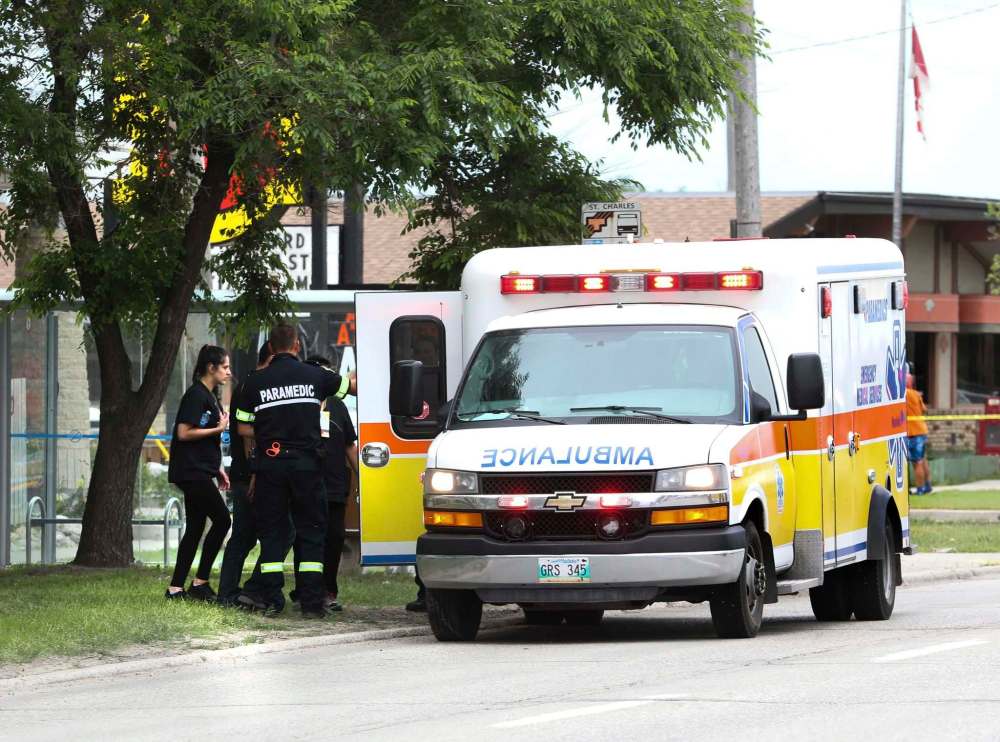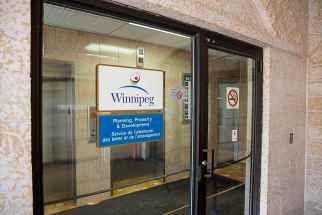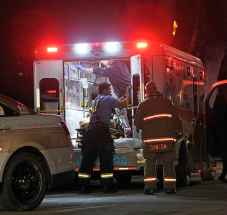Rise of paramedicine means city only needs three ERs
Read this article for free:
or
Already have an account? Log in here »
To continue reading, please subscribe:
Monthly Digital Subscription
$0 for the first 4 weeks*
- Enjoy unlimited reading on winnipegfreepress.com
- Read the E-Edition, our digital replica newspaper
- Access News Break, our award-winning app
- Play interactive puzzles
*No charge for 4 weeks then price increases to the regular rate of $19.00 plus GST every four weeks. Offer available to new and qualified returning subscribers only. Cancel any time.
Monthly Digital Subscription
$4.75/week*
- Enjoy unlimited reading on winnipegfreepress.com
- Read the E-Edition, our digital replica newspaper
- Access News Break, our award-winning app
- Play interactive puzzles
*Billed as $19 plus GST every four weeks. Cancel any time.
To continue reading, please subscribe:
Add Free Press access to your Brandon Sun subscription for only an additional
$1 for the first 4 weeks*
*Your next subscription payment will increase by $1.00 and you will be charged $16.99 plus GST for four weeks. After four weeks, your payment will increase to $23.99 plus GST every four weeks.
Read unlimited articles for free today:
or
Already have an account? Log in here »
Hey there, time traveller!
This article was published 10/07/2019 (2347 days ago), so information in it may no longer be current.
The number of patients treated on scene by Winnipeg paramedics, and not taken to hospital, has soared in recent years. It’s one of the main reasons we no longer need full-service emergency departments in every part of the city.
From 2013 to 2017, the number of patients assessed or treated on scene has increased 57 per cent, to 25,716 from 16,366, the City of Winnipeg’s most recent data show. During the same period, the number of patients taken to hospital by paramedics has grown by only 11 per cent.
Paramedicine has become the new health care on wheels. In a growing number of cases, paramedics are able to assess and treat patients on the spot without having to take them to a hospital.

!function(e,t,s,i){var n=”InfogramEmbeds”,o=e.getElementsByTagName(“script”)[0],d=/^http:/.test(e.location)?”http:”:”https:”;if(/^/{2}/.test(i)&&(i=d+i),window[n]&&window[n].initialized)window[n].process&&window[n].process();else if(!e.getElementById(s)){var r=e.createElement(“script”);r.async=1,r.id=s,r.src=i,o.parentNode.insertBefore(r,o)}}(document,0,”infogram-async”,”https://e.infogram.com/js/dist/embed-loader-min.js”);
It also means paramedics — particularly advanced-care paramedics, who undergo greater medical training than primary-care paramedics – can more effectively assess and stabilize patients on scene before taking them to a hospital. They can save a life right away.
The number of ambulances staffed with advanced-care paramedics is growing, too; it stands at 77 per cent. Supervisors are also licensed as advanced-care paramedics.
That’s a game changer. It’s why health officials continually advise the public that if they have a medical emergency, especially a life-threatening one, to call 911. It’s the best and fastest way for people to get medical care in those circumstances.

The carbon monoxide leak at the Super 8 hotel on Portage Avenue Tuesday was a prime example. The most important part of the emergency response was how quickly firefighters and paramedics arrived on scene, took control of the situation and immediately assessed and treated patients. Those patients were later taken to one of four hospitals.
The proximity to those hospitals was less important than the speed with which emergency personnel arrived on scene and provided pre-hospital care.
That’s true for most medical emergencies. For people suffering a heart attack at home, for example, the recommendation is to call 911 to get medical care as quickly as possible. Once stabilized, if the patient requires hospitalization, they will likely be taken to St. Boniface Hospital, which specializes in cardiac care, no matter where they live in the city.
City of Winnipeg statistics show the longest wait time for an ambulance for nine out of 10 patients is just over eight minutes. Most people would be hard-pressed to get a friend or family member to an ER, or an urgent care centre, that fast on their own. Even if they did, they wouldn’t necessarily get the immediate medical attention they would from a paramedic on scene.
It’s one of the reasons the Pallister government cut ambulance fees in half to $250: to make the service more accessible and to encourage more people to use it. It’s $219 for treatment but no transport. They should do something to lower that, too.

It’s also why the province is consolidating acute-care hospital services at three facilities in Winnipeg, down from six. With advances in paramedicine, the city doesn’t need six acute care hospitals, each with its own emergency department. It makes more sense to pool those resources at three facilities, including specialty services and diagnostic testing.
Under the new model, when ambulances do transport very sick patients to an acute care facility, there’s a better chance the medical services they need will be there (and a costly, time-consuming transfer to another facility can be avoided).
Ambulances will still transport low-acuity patients to one of three urgent care centres in the city, namely Victoria Hospital, Concordia Hospital and Seven Oaks Hospital (as of July 22). But higher-acuity patients will more consistently go to St. Boniface Hospital, Health Sciences Centre and Grace Hospital.
The challenge has been the implementation of the hospital reorganization plan. It hasn’t gone well. The required resources at the three acute care hospitals to handle the influx of high-acuity patients is still not in place, and likely won’t be when Seven Oaks converts its ER to an urgent care centre. That still requires work.
But whether there’s an emergency department five minutes or 20 minutes away matters far less today than it did in the past. The most important thing now is access to a phone. It can be the difference between life and death.
tom.brodbeck@freepress.mb.ca

Tom has been covering Manitoba politics since the early 1990s and joined the Winnipeg Free Press news team in 2019.
Our newsroom depends on a growing audience of readers to power our journalism. If you are not a paid reader, please consider becoming a subscriber.
Our newsroom depends on its audience of readers to power our journalism. Thank you for your support.
History
Updated on Thursday, July 11, 2019 9:38 AM CDT: Adds missing word











